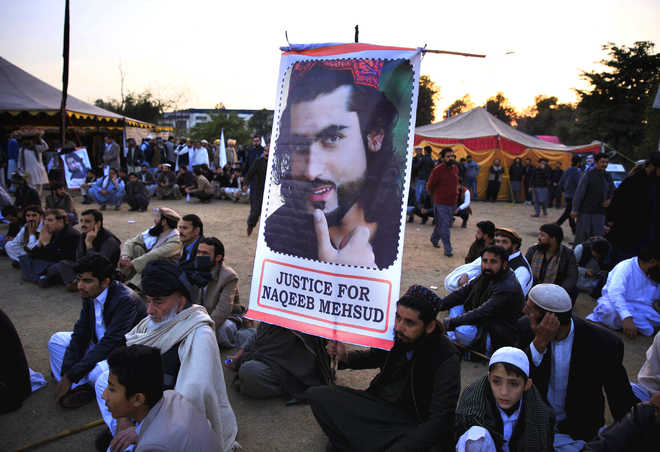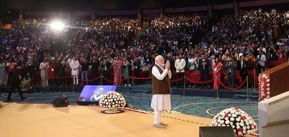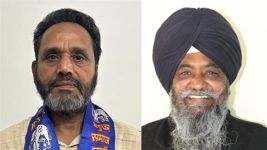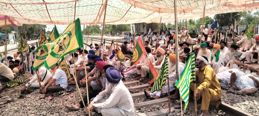
Cry for justice: Pashtun protests were provoked by the January 2018 extra-judicial killing of a Pashtun youth, Naqeebullah Mehsud.
Tilak Devasher
Member, National Security Advisory Board
Conventional wisdom in and about Pakistan has been that the dominant Punjabis had coopted the Pashtuns as a junior partner to rule the country. Thus, whether it was the army, the paramilitary or the bureaucracy, the Punjabi-Pashtun partnership was lording over the smaller ethnic groups like the Baloches and Sindhis. However, Pashtun protests during the past year have seen the first cracks in such a narrative.
Pashtun protests were provoked by the January 13, 2018 extra-judicial killing of a Pashtun youth, Naqeebullah Mehsud in Karachi by 'encounter' specialist SSP Rao Anwar who boasted of over 400 such 'kills'. After a sit-in in Karachi, Pashtun youth organised a ‘long march’ from Dera Ismail Khan to Islamabad on February 1. The objective was to seek justice for Naqeebullah and to express their pent-up feelings of anger and alienation at being the victims of constant warfare for decades. The 'long march' morphed into the Pashtun Tahaffuz Movement (PTM) that has over the past year taken the Pashtun belt in Pakistan by storm.
In the one year of its existence, the PTM has become a broad-based movement challenging the state's attitude towards the Pashtuns during anti-terror operations. Its activities have shown that it was not a fleeting expression of rage and anguish in a war-ravaged region. Rather, it has become the rallying cry of the community that has had enough of the war and displacement that it entailed due to the state's Afghan policy.
Manzoor Pashteen, a Mehsud Pashtun in his mid-20s, has emerged as the leader of the movement. In an article published in the New York Times, Pashteen wrote that at first the militants who escaped to the area after the fall of the Taliban regime in Afghanistan, terrorised and murdered the residents. Thereafter, the army's operations against the militants brought further misery: civilian killings, displacements, enforced disappearances, humiliation and the destruction of their livelihoods and way of life.
While several factors account for the stunning popularity and mobilisation of the PTM, a key element has been the apathy of mainstream Pakistani political parties, especially the Pashtun ones like the Awami National Party (ANP)
towards the plight of the Pashtuns. Having compromised with the army for crumbs of office, the ANP became a mainstream party that chose not to articulate wider Pashtun grievances brought about by the war on terror. This gulf between Pashtun grievances and the ANP was increasingly filled by the PTM.
Three slogans of the PTM have fired the imagination of the Pashtuns. The first is: "Yeh jo dehshatgardi hai, is ke peechay wardi hai" (behind this terrorism, is the [military] uniform), pointing to a nexus between the terrorists and the army. The second is "Da Sang Azadi Da?" (What kind of freedom is this?). Its latest ‘islar-o-bar yaw Afghan’, i.e ([People of] low and highlands are one Afghan), implying the commonality between the Pakistani Pashtun (lar) and their Afghan brethren (bar).
Another powerful representation of the movement is the distinctive, embroidered red-and-black Mazari cap. Such has been the symbolism that similar caps have been banned from several places, including the Bannu university, that termed wearing the specific cap 'subversive' and a sign of ethnic divide.
The main demands of the PTM are (i) the immediate arrest and prosecution of Rao Anwar (ii) stopping of enforced disappearances and extrajudicial killings and their investigation, (iii) an end to the harassment and humiliation of the people of the tribal areas and (iv) the removal of all landmines from former FATA. Over the past year, other demands have been added, like a complete control over their resources instead of their being extracted and transported to Punjab.
The unique thing about the PTM is that perhaps for the first time in Pakistan a peaceful movement has challenged the holiest of holies — the army — for enforcing rights under the constitution. Not surprisingly, the PTM has across-the-board acceptability since most Pashtuns, especially the youth who were born and grew up during the war on terror, have personal experiences of war and devastation.
Perhaps, the most important impact of the PTM is its success in demolishing the atmosphere of fear in KPK that had forced people to bear atrocities silently. The movement has given a platform and a voice to the suffering people who had been at the receiving end of terrorist violence and state oppression. According to Pashteen, activism has created awareness that the Pashtuns were mere pawns in a war that was fought for the benefit and interests of others in which there was collusion between the military and the militants.
The army, suffering as it does from the Bangladesh syndrome, has been suspicious about the PTM from the start. It has tried to crush its activities in the only manner it knows — using the muscular approach. It has even gone to the extent of saying that the PTM's 'time was up' and has accused it of acting at the behest of Afghanistan and India.
The moot question that the Pashtuns are asking is why does the army regard a peaceful rights movement as an enemy conspiracy rather than what it really is — a movement demanding constitutional rights and justice? The Pashtuns are beginning to discover, just like the Baloches, the Bengalis, and the Sindhis discovered earlier, that non-Punjabis do not have the freedom to make their voices heard in Pakistan. Such a belief, if it continues to grow, could have dangerous portents for Pakistan. Equally, coercive action against the already alienated Pashtuns could invite a backlash and sow the seeds of enduring tension between the Pashtuns and the Punjabis. Noted journalist Saleem Safi perhaps best summarised the situation: 'The whole country, the Pashtun belt in particular, is once again inching closer towards a new, dangerous and gory crisis. The situation has reached an alarming level and if both sides don't come to their senses, it could result in a national calamity.'
— The writer is the author of ‘Pakistan: Courting the Abyss’ and ‘Pakistan: At the Helm’



























